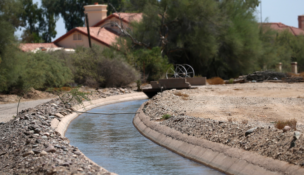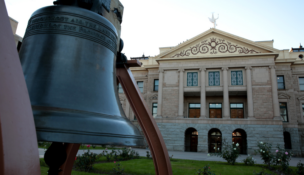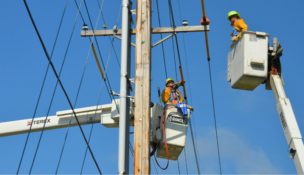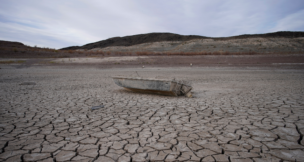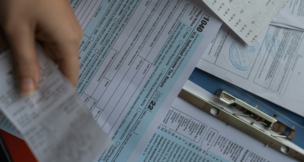Arizona among states with green-building laws that ‘lead by example’
Arizona Capitol Reports Staff//November 16, 2007//[read_meter]
Arizona among states with green-building laws that ‘lead by example’
Arizona Capitol Reports Staff//November 16, 2007//[read_meter]
Even on the Las Vegas Strip, where over-the-top casino and hotel complexes are the norm, the $4.8 billion Echelon is sure to stand out.
Slated for completion in 2010, the 87-acre property is expected to house five hotels with a combined 5,000 rooms and suites, 30 restaurants and entertainment venues, more than 200,000 square feet of pools and outdoor gardens and 140,000 square feet of casino space.
It also will incorporate some of the latest thinking in environmentally aware construction.
Rob Stillwell, vice president of corporate communications for the Boyd Gaming Corp., which is developing the site, said Boyd is working with green-building consultants to maximize use of natural light, conserve water, choose roofing materials that deflect heat and take other steps to reduce the project’s environmental footprint.
In return for meeting certain criteria for environmentally responsible construction, known as Leadership in Energy and Environmental Design (LEED) standards, the state will give the development a substantial property-tax break.
Nevada, like many states, has enacted legislation that encourages developers to meet LEED or other standards designed to be more energy efficient and less harmful to the environment. Many states also are requiring that government buildings meet LEED standards.
The LEED certification, created in 2000 by the U.S. Green Building Council (USGBC), is awarded to buildings that meet USGBC standards for energy and water conservation, indoor-air quality and selection of preferred materials, among other things.
LEED standards have been developed for a range of projects, including homes, schools, commercial structures and renovations of existing buildings. There are also different levels of LEED acceptance — certified, silver, gold and platinum — which are awarded based on the aggressiveness of the measures taken.
Although LEED is not the only green-construction benchmark, it is one of the most widely accepted, said Jason Hartke, director of advocacy for the U.S. Green Building Council. More than 1,000 buildings nationwide are LEED-certified, including 109 government projects, according to USGBC statistics. Hartke said 629 government projects now under construction expect to achieve LEED status, along with about 7,000 non-government buildings. LEED projects can be found in all 50 states and in 30 countries.
Hartke said 26 states now have some sort of green-building legislation — most of them based on LEED standards — up from 19 a year ago. “We’ve seen all sorts of things being done,” he said.
Mostly, these state laws take the form of “lead by example,” in which states set high standards for their own government buildings but don’t require private developers to do the same thing. Among states with these kinds of laws are Arizona, California, Florida, Massachusetts, as well as others.
In Florida, Republican Gov. Charlie Crist signed an executive order in July requiring any new state building to meet LEED construction standards. Dean Izzo, director of real estate for the state’s Department of Management Services, said the first buildings to be constructed with the new LEED standards will be three Department of Revenue structures in Tallahassee, now in the design phase.
Florida buildings already were considered “high performance,” he said, but the new law “takes us to the next level.” New features will include an air distribution system that can be adjusted at every workspace and a permeable parking lot that will allow groundwater to run through it and also relieve the intense heat build-up inevitable in Florida.
Another example of these green incentives is in Colorado, where Democratic Gov. Bill Ritter signed a bill in April requiring that all new or renovated buildings using 25 percent or more state money meet LEED or another high-performance building standard.
Rod Vanderwall, manager of energy programs for the Office of the State Architect, said Colorado already was following the 2006 International State Energy Conservation Code, but the new law sets a higher standard. “We’ll pay more attention to lighting quality, interaction with heating and cooling systems, and insulation,” among other things, he said.
Although some of these changes may add to the cost of construction, the energy savings should more than compensate, he said.
Some states, such as Nevada and New Mexico, have established tax incentives for private developers to meet LEED standards. Illinois in August became the first state to offer financial incentives to LEED-compliant neighborhood development, providing as much as 1.5 percent of total development costs from the state's Department of Commerce and Economic Opportunity for as many as three neighborhoods a year. Hawaii’s incentive focuses on building permits: The state offers quicker processing time for construction that achieves LEED Silver standard.
But laws actually mandating more efficient construction are generally left to individual municipalities, such as in Boulder, Albuquerque and Austin, said Steve Dunn, a senior associate at the Southwest Energy Efficiency Project. That may change, though, as New Mexico is working on a statewide green-building code, he said.
In Nevada, the 2005 tax-incentive law proved so popular that the financial benefits were scaled back in the 2007 legislative session after concerns were raised that municipalities were losing too much tax revenue.
Stillwell, of Boyd, said his development will receive benefits under the 2005 law but noted that he would have incorporated some energy-saving features anyway, because they would save money down the road. He said the specific criteria established by the law — as well as the tax credits — prompted the company to do more.
Still, not everybody thinks these laws are such a good idea.
Todd Myers, adjunct scholar with the Competitive Enterprise Institute, a nonprofit public-policy organization in Washington, D.C., focused on free enterprise and limited government, said he has no problem with private companies working to meet LEED standards but does not believe government should require it, either for public or private buildings.
He argued that LEED projects are not as energy-efficient as promised. He points to his own research of school systems in Washington state that found that LEED buildings did not always save energy. For example, large windows, which let in more light and cut energy used by light bulbs, also let in cold and heat, he said.
Myers said local facility managers, familiar with the climate and the specifics of their own buildings, should look for energy savings, perhaps prompted by a higher tax on fuel, he said. “Having somebody come in from the outside and say here’s how you’re going to do it from now on doesn’t take advantage of the expertise they have in their local area,” he said.
Hartke, of the USGBC, said that the LEED certification’s point system gives it flexibility and that it has a “proven track record.” Studies show that the 2 percent increase in building costs is generally paid back within 14 months, he said. “After that, you’re talking about a return on investment,” he said.
Karen Nitkin is a freelance reporter who works out of Maryland.
Stateline.org is an independent element of the Pew Research Center and is based in Washington, DC






